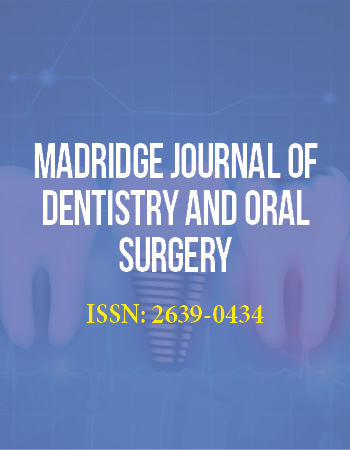International Conference on Dentistry
April 3-5, 2017 Dubai, UAE
Minimally invasive sinus augmentation using platelet derived growth factor infused graft
Bapuji Dental College and Hospital, India
This prospective single cohort study was conducted to evaluate the efficacy of a composite graft containing rhPDGF-BB+β-TCP (β-tricalcium phosphate) admixed with Xenograft, in the minimally invasive direct sinus augmentation of localised atrophic maxillary posterior ridges. Radiographic (CBCT scan) examinations were done at baseline, immediate post-operative and 6 months post-operatively and histomorphometry was performed 6 months post-operatively.A total of 17 patients (20 maxillary sinuses) with atrophic maxillary posterior residual ridges willing for the implant supported restorations were selected for this study, using consecutive sampling technique, from the out-patient Department of Periodontics, Bapuji Dental College & Hospital, Davangere (India). Surgical procedure was carried under strict asepsis incorporating stress reduction protocol. Direct sinus augmentation procedure was done under local anaesthesia where the lateral window was separated from underlying schneiderian membrane using the wall-off technique. A composite graft containing rhPDGF-BB+β-TCP admixed with deproteinzed bovine bone was used to augment the sub-antral compartment and the bony window was replaced back followed by a resorbable collagen membrane placement. Primary flap closure was achieved using polyamide sutures. An immediate post-operative CBCT was taken to ensure the intactness of schneiderian membrane. After 6-month healing period, a CBCT scan was taken and radiographic evaluation of healed grafted sinus. During the implant placement, a bone core was harvested one per treated sinus from the previous access window and histomorphometric analysis was done.On radiographic evaluation, the mean pre-operative bone height (H0) was 3.02±1.35mm, Post-graft bone height (H1) immediately after the augmentation was 15.18±2.52mm and post-operative bone height (H2) after 6 months observation period was 14.79±2.30mm. The immediate post-graft volume (V1) was 1106.10±398.84 mm3 and post-operative volume (V2) was 1086.95±396.86 mm3. There was significant gain in the residual ridge height over 6 months from the baseline, while there was no significant change in the gained height or volume of the grafted sinus during this period. Histological evaluation revealed the bone bridging and bone regenerative efficacy of the graft material with vital new bone formation, residual graft and non-mineralized tissue of 19.17±2.63%, 33.02±7.01% and 47.38±6.72% respectively and the implants placed in the augmented showed 100% survival rates.The preliminary data obtained from this study, with in its limitations, indicates that this minimally invasive sinus augmentation with the composite graft could be efficiently used for the implant site preparation of posterior maxillary atrophic ridges. A predictable and promising bone gain and integration of the implant was observed with this procedure.
Biography:
Sai Divya Gayatri Pamidimarri, is a resident pursuing Periodontics from Bapuji Dental College and Hospital, Davangere. With themotto of spreading smiles and a ray of interest in exploring dentistry abroad she attended an international student exchange programme during September 2011 in University of Medicine and Dentistry New Jersey (Now Rutgerʼs University), Newark, USA. She was one of the winner (second prize) of the national essay competition conducted by Elsevierpublications in 2016 for the inaugural of 12th edition Carranzaʼs Clinical Periodontology textbook in India. She has two national papers published under specialty of Periodontics. Besides these, she has a couple of clinical studies one of which is to be presented in Dental-2017 Conference, UAE.


